Introduction and Interview Gabrielle de la Cruz
Images Ang Ating Mga Kayamanan sa Bakuran Team
Gold is a transition metal. Scientifically, it can bond with other elements without reacting to most chemicals. A similar concept happens when gold is used in art. The substance can be manipulated into different forms, but its striking presence remains.
Repoussé artist Jandy Carvajal maximizes the aureate appearance of brass in his current exhibition, Ang Ating Mga Kayamanan sa Bakuran. He presents a collection that is reminiscent of gold medals to highlight a mundane subject: vegetables. A total of 15 pieces are adorned with patterns of produce such as ampalaya, kangkong, and malunggay, which are commonly grown in domestic spaces.
Curated by Alain Zedrick Camiling, the exhibition which opened last July 5 is a dialogue on the interconnectedness of man’s needs and desires. The juxtaposition of gold-plated brass and everyday glow food underscores the value of resources. In line with the celebration of nutrition this July, Ang Ating Mga Kayamanan sa Bakuran showcases a unique play on the good-old “health is wealth” principle. It is a fitting display of how artistic growth allows one to touch on economic issues such as the threat of hunger and malnutrition amidst an ongoing pandemic.


Below is Kanto’s conversation with Carvajal and Camiling, where we discuss the exhibit, their creative beginnings, artistic ideals, and their hopes for the art industry moving forward.
Hello Jandy and Alain! How are the first few days of the exhibit? Are there any interesting anecdotes or observations from guests so far?
Jandy Carvajal: People are coming in installments, which is good, so there is enough time and space for them to observe the works, which are small-scale and detailed. We were able to set up within a day, but preparations and coordination, including the production and planning, took us months. It’s heartening now that we hear how the exhibit is well conceptualized and that the works are beautiful.
Alain Camiling: One common impression we get from our visitors is that the works are presented like jewelry. We are happy about this as we want to highlight that vegetables are as precious as luxurious objects. We are also overwhelmed by the support we are getting from local media.
In addition, we have mounted a repoussé workshop with select participants. IATF protocols were observed, of course. We worked with a cohort of 9 individuals engaging with the academe and with the creative industries sector during the 2nd day of the exhibition.
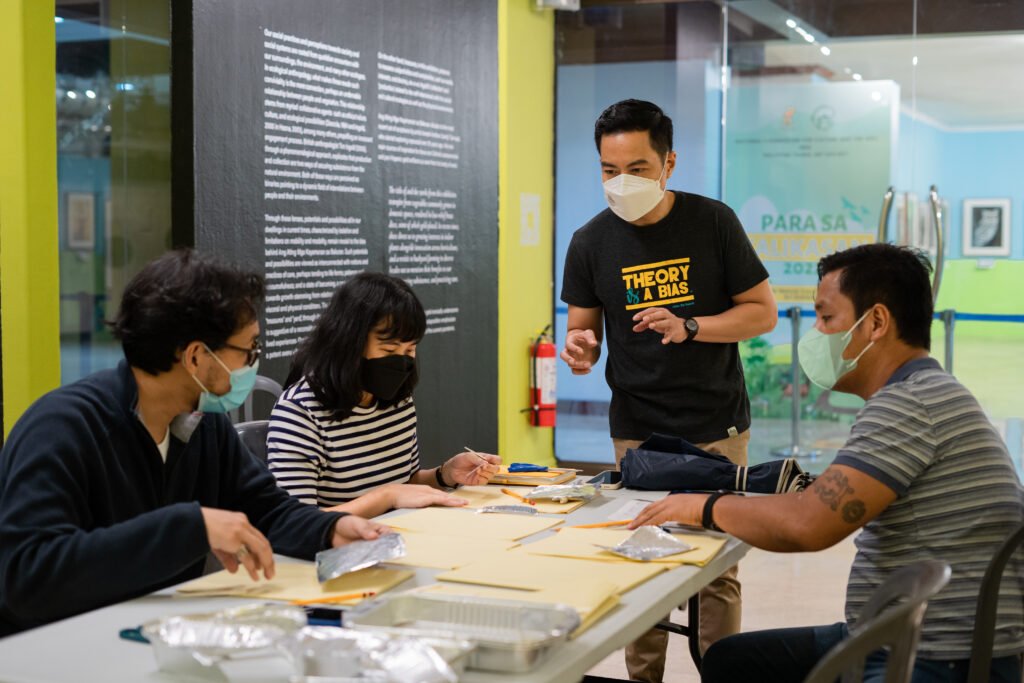



Can you share with us how Ang Ating Mga Kayamanan sa Bakuran came about?
Carvajal: I submitted an exhibition proposal to NCCA in 2021 upon seeing their call online. Acknowledging that we were still in a pandemic then, I decided to expand a series of brass repoussé works that I began creating in 2020, a few months after the hard lockdowns. The series reflects on that difficult time when access to food was limited, and their high value became more salient. The golden brass discs emphasize how precious their subjects are.
The series began when backyard farming gained popularity as a prudent response to restricted mobility, limited resources, and the need to eat healthier for stronger immunity. In November 2021, NCCA notified me that my proposal was approved, and so I promptly researched the other vegetables I would depict. I initially thought of expanding the series to just ten works, but momentum and inspiration in the coming weeks allowed me to produce a total of 15 pieces, depicting a variety of common vegetables in the Philippines, some of which are not included in the Bahay Kubo song.
I guess it was also quite organic that vegetables became my subject since I have always been drawn to botanicals. I have had 2 solo exhibits showcasing flowers, one show featured indoor plants, and several of my other works have plant motifs.
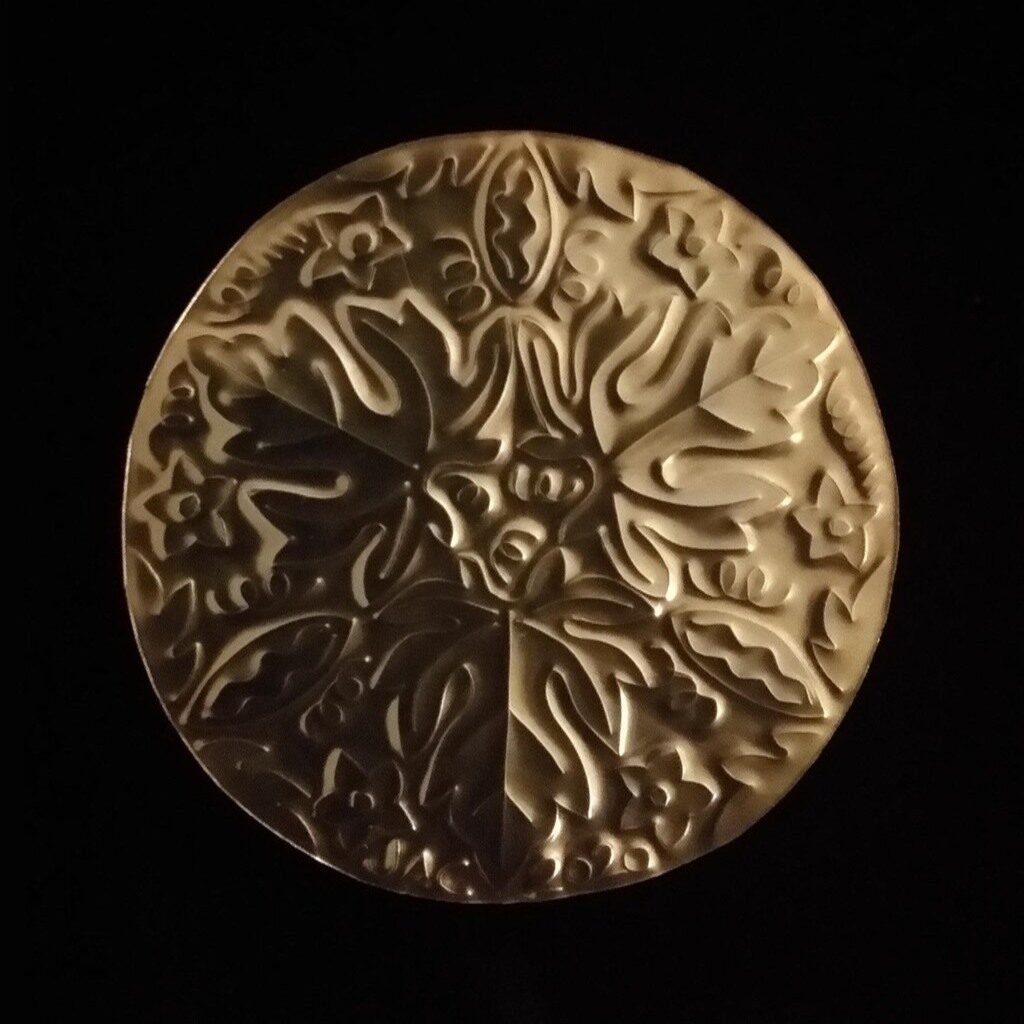

Alain, may we ask how you and Jandy know each other? What sparked your interest in his body of work?
Camiling: From 2020-2021, I worked as an adjunct researcher at the University of the Philippines Baguio’s Fine Arts Program where I assisted faculty members to research and develop learning and instructional modules for various courses under the program. I reported to Jandy, who served as program coordinator for Fine Arts apart from former department chairperson Rachel Pitlongay. In between, I also served as an adjunct lecturer before working full-time for De La Salle- College of Saint Benilde Manila’s Arts Management Program.
In November 2021, I served as assistant curator and arts manager for Ibagiw Art Festival’s Alimuom Visual Arts Exhibition led by Fara Manuel-Nolasco, where Jandy was a participating artist.
Perhaps what sparked my interest in his work is the sheer interconnection with the quotidian, the subtlety of it. Lately, I have been fascinated with the mundane and its littlest of things, including how we approach it. It seems that there are things that we often overlook and forget. I often look into our lived experiences and how these are shaped by many quotidian ecologies through materiality and gestures and manifestations of viscerality.
Carvajal: I am actually glad that I tapped Alain to be curator and writer for the exhibit. He provides a fresh way of presenting and viewing my metal works. He was co-curator of a group show I previously participated in. His dedication as a collaborator is solid.
Speaking of metal works, can you tell us more about your exploration of repoussé? Do you remember the initial moment you decided to pursue this approach to sculpture?
Carvajal: I have always been fascinated with the repoussé adorning Catholic sacramentals. Much like jewelry, the embossed metal sheets are art forms themselves, complementing the saint statues and their custom clothing. It was in grade six art class that I was ushered into trying this technique using aluminum protective sheets. I remember making more than the required number of pieces because I really enjoyed seeing my chosen motifs instantly emerging as low reliefs from the malleable material, whose color and luster resembled silver. It was amazing to see how the ordinary material got transformed and suggested high value by simple manipulation using improvised tools such as ball pens.
In 2009, after a series of museum visits where I saw examples of repoussé on prehispanic Philippine gold artifacts, I got inspired to re-explore the technique. I gained momentum to produce many pieces for exhibitions moving forward. My re-explorations using aluminum eventually led me to try brass, the material for this show.


Did the process of creating this particular set of medals pose any challenges? Are there any artistic philosophies that informed the concept and form of the artwork?
Carvajal: Since I worked with thicker metal sheets, there were a few times when my hand got pierced and cut, and I developed callouses. But I never let that derail me. I literally kept on pushing. I enjoy the craft and I acknowledge the physical properties of the materials. I believe that work becomes stronger conceptually when the materials are well chosen. The material adds meaning to the work; it’s not just a carrier of the message.
For this series, high value is suggested by the gold color of the brass discs. Some of the pieces have also been gold-plated to further emphasize how important vegetables are. Since the pieces resemble jewelry, the way they are framed under glass against a dark matte background was intentional.
I have decided to continue using the circular format I have gotten used to, since it allows radial symmetry, much like a kaleidoscope view, where small components seem to dance within a limited space. In a small area (2.75” diameter), I tried to fill in a variety of motifs: leaves, stems, blossoms, and fruits. The scale encourages the viewer to look closer, to take time to observe.
Is the juxtaposition of opposing concepts a constant theme in your work, or is this a new approach you intend to pursue moving forward?
Carvajal: There were times that I employed juxtaposition to spark a dialogue between the materials and the subjects of the works. Sometimes there is apparent contrast, but with some rumination, one may realize that the juxtaposition may show similarities in concepts rather than contrasts. In one of my solo shows, for instance, I depicted lowly wildflowers using salvaged aluminum. Both could easily be ignored by most people.
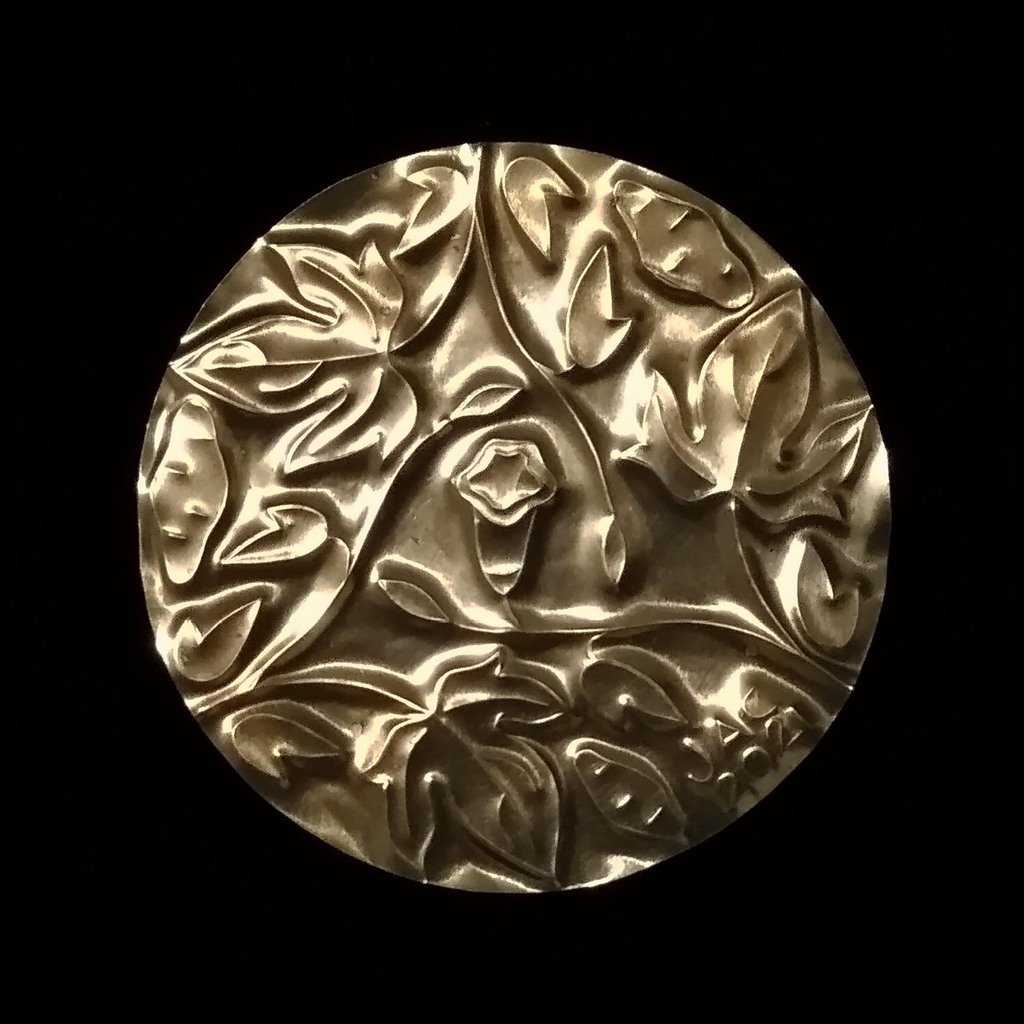
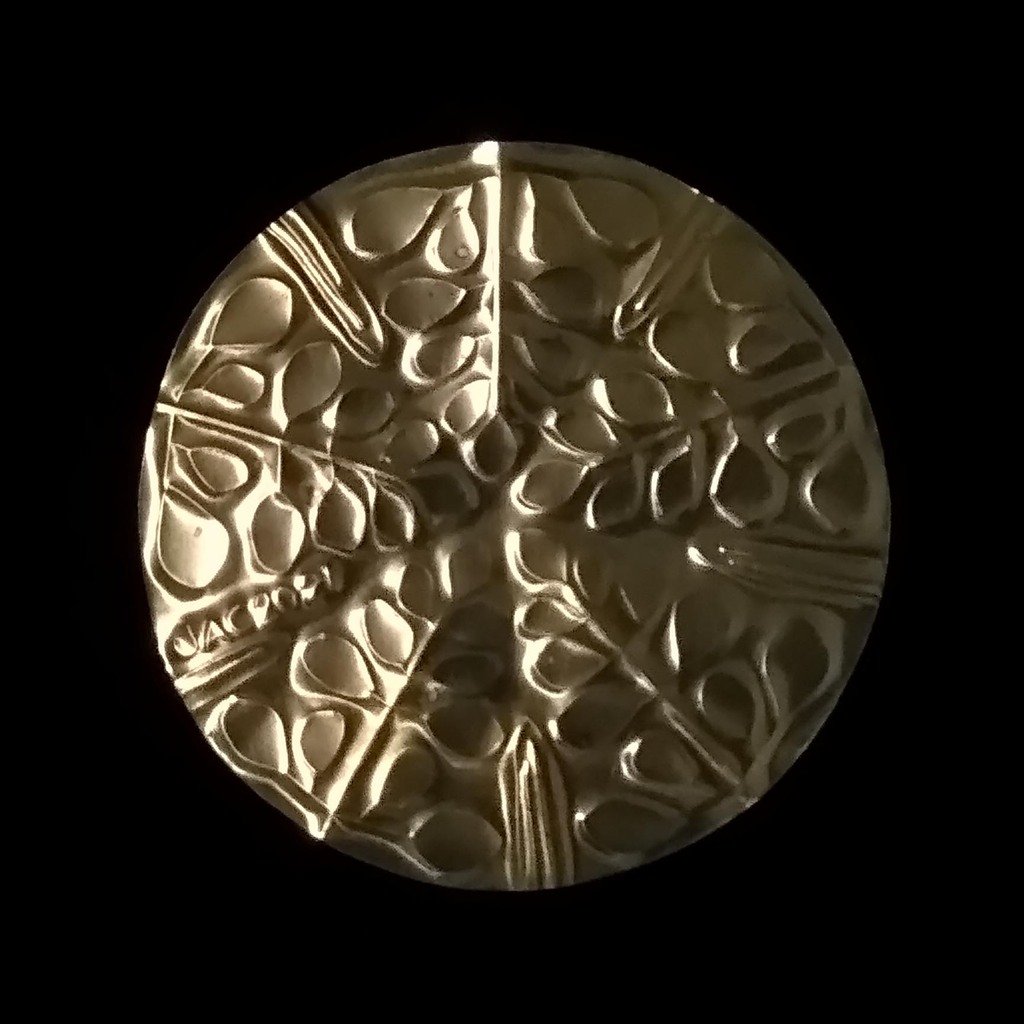
Has the exhibit yielded lessons or further strengthened your resolve on repoussé?
Carvajal: Learning from the past decade, when I created and exhibited most works, I keep a mental note to stay true to myself. Repoussé is an art form that I enjoyed in childhood, have revisited, and will continue to explore. It has the potential to convey different content in various forms.
I also want to ask Alain. What about this exhibit resonates with you as a curator and viewer? How is it illustrative of the themes and rationales that you adhere to when curating art shows?
Camiling: The recent exhibitions I curated revolved around the quotidian – the fragility of life and relationships, animate proof of the mundane, and changes we encounter. I am fascinated by how these propel, manifest, and capture both materiality and viscerality through various artistic and creative resonances. As for themes and rationales, I tend to be more generative and collaborative in terms of working with diverse individuals and groups. I still consider myself an emerging practitioner, so I remain open to learning many things across the arts ecosystem.
My interest in audiences stems from my art education undergraduate years. I often ask myself when working on projects: “How would the audience take this?” “Would this make the audience think beyond what is presented?” “Is this something they can learn something from?” And so on. For this exhibition, we point to relationships between people and vegetation. One take-off point is Tim Ingold’s (2000) ideas on production and collection as two ways of securing subsistence from the environment which points us to these interconnections.


Art is universal and people have different perceptions of a specific collection or piece. But is there a particular takeaway or course of action that you wish for people to realize or pursue after seeing the exhibit?
Carvajal: Yes, different people can have different ways of viewing and receiving artworks. It is something I acknowledge. I am happy when guests admire the formal, decorative qualities of the works. I am equally glad when guests appreciate the concepts underlying the series, aside from the glitter. In any case, the works are representational: they remind viewers of the vegetables that are grown in the Philippines, in yards not just in the fields. By being reminded of these, people might consider growing their own edible kayamanan in their bakuran too. If not, I hope the exhibit could simply be a reminder for people to eat vegetables. We are still in the middle of a pandemic. We need proper nutrition to strengthen our immunity.
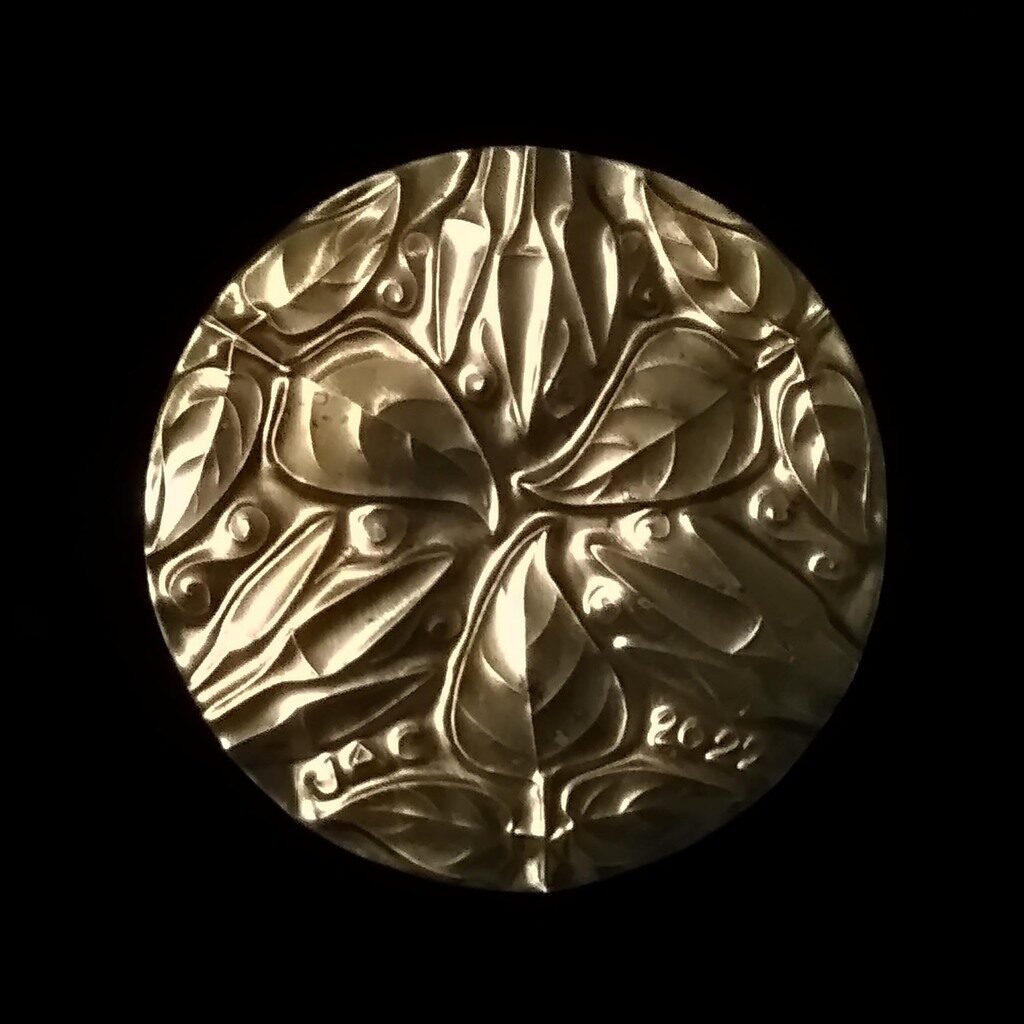

Describe the Philippine art scene at the moment; are you hopeful for where it’s headed?
Camiling: I would always remain hopeful for greener pastures for the creative industry. At the moment, I would say we are constant witnesses to endless possibilities and explorations in terms of artistic practices and processes. Collaborations are now approached on various platforms, through myriad models. I foresee an art ecosystem constantly dealing with cyberspace. Despite being in the pandemic and amidst many things, I would say the local art ecosystem has been commendable in terms of constant recalibration and undying desire to create, mediate, and connect people, spaces, and places.
Carvajal: The diversity of art practice in the Philippines is a sign of hope. Artists choose to explore and adhere to art forms and subjects that they gravitate towards. We are reminded that there is no single way of making art. Some continue tradition and are more academic in approach. Others are more experimental, using newer tools and techniques. Some challenge the art versus craft dichotomy. Their dedication to their respective artistic philosophies is visible in their outputs. In the midst of this diversity, education is all the more important. Artists and audiences alike need to remember why creative expressions vary in form and content, and that art can have many functions — none is more valid than the rest. •
Gabrielle de la Cruz started writing about architecture and design in 2019. She previously wrote for BluPrint magazine and was trained under the leadership of then Editor-in-Chief Judith Torres and then Creative Director Patrick Kasingsing. Read more of her work here and follow her on Instagram @gabbie.delacruz.
Ang Ating Mga Kayamanan sa Bakuran will run until July 31, 2022 at the National Commission for Culture and the Arts in Intramuros, Manila.
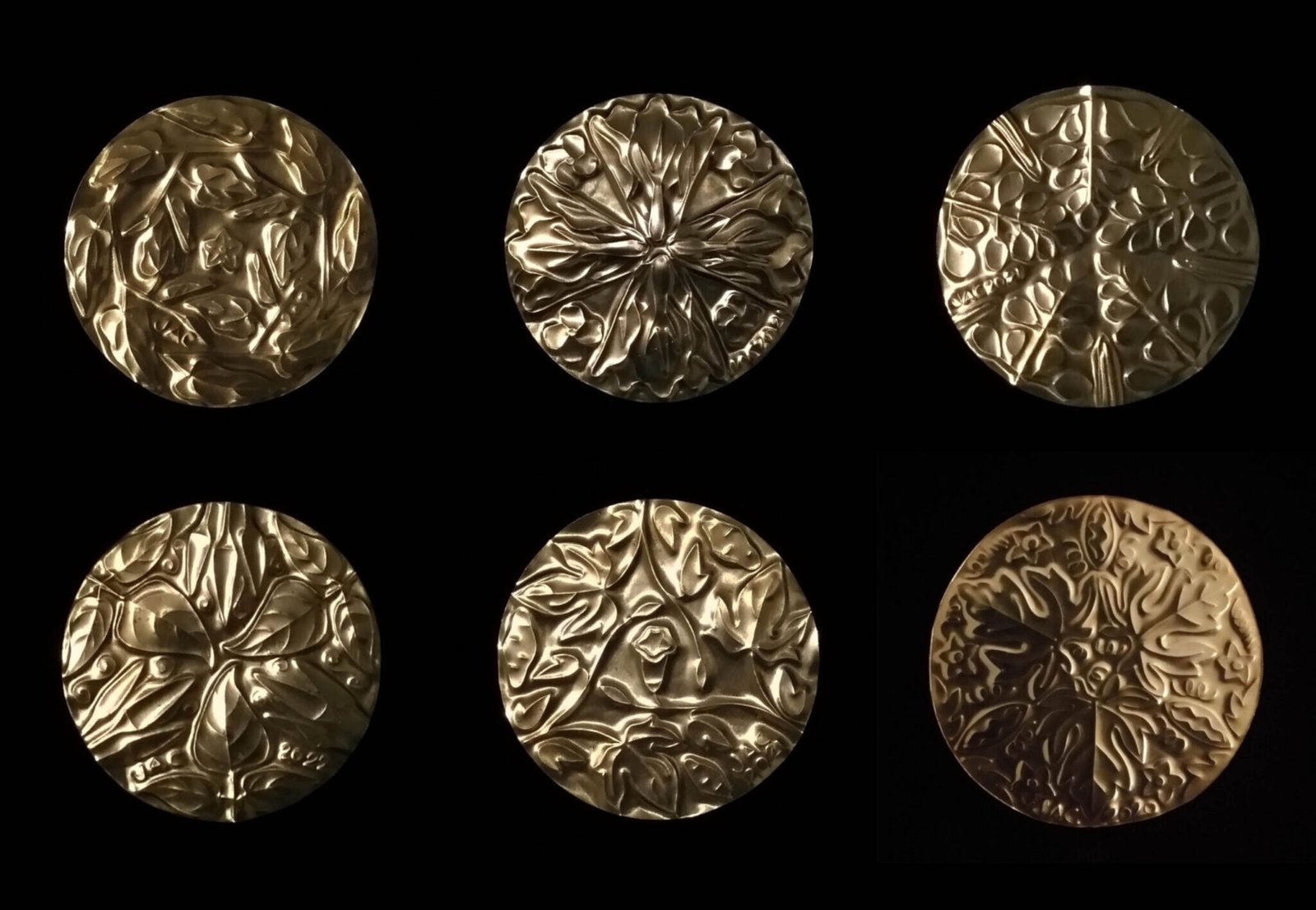

2 Responses